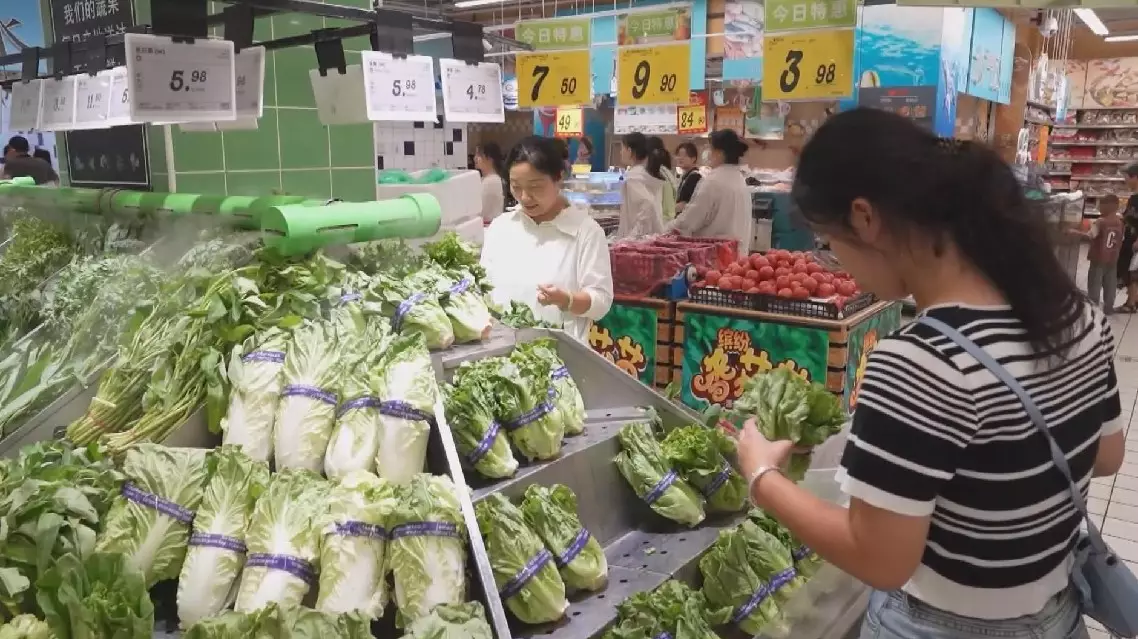China's vegetable prices have gone up due to unfavorable weather conditions recently, and the increases are expected to narrow over increased supply in the near future.
In Hefei City, east China's Anhui Province, 20 out of 30 vegetable varieties have registered price growth, with cucumbers, white radishes and winter melons seeing the largest week-on-week increases between 6 percent and 8 percent.
Industry observers said persistent heat has dragged down vegetable production, thus driving up their prices.
"The entire vegetable market is still relatively active. But as recently temperatures have remained high, locally-produced vegetables are not available in sufficient quantities," said Wang Ping, an information officer of Hefei Zhougudui Agricultural Products Wholesale Market.
Her opinion is shared by consumers and vendors in a major vegetable wholesale market, where nearly 500,000 kilograms of vegetables are traded every day, in Jinan City, east China's Shandong Province.
"Vegetable prices have been a bit high these days, mainly due to supply and demand imbalance. When there are fewer vegetables, the prices will naturally go up. Soon, when there are more vegetables, the prices will become lower," said Yuan Shanzhong, a consumer.
"In order to stabilize vegetable prices and ensure a continuous supply of fresh vegetables on people's dining tables, we have increased the procurement of vegetables from Zhangjiakou in Hebei and other places to fill the supply gap, and also boosted the frequency of shipments," said Yuan Ji'en, the head of the vegetable wholesale market. Nationwide, the data from the Ministry of Agriculture and Rural Affairs showed that the average wholesale price of 28 vegetables monitored by the ministry climbed 9.6 percent to 4.79 yuan (about 0.67 U.S. dollars) per kilogram on a monthly basis in July. Since the beginning of this month, vegetable prices have maintained the upward trend.
Industry experts attribute the price increases largely to unfavorable weather conditions during summer.
"The main reason is that July and August are the 'slack season' for vegetable production and supply. The high temperature and heavy rainfall in summer are not conducive to the growth of vegetables. Generally, vegetable prices turn to seasonal rise at this time of year. In addition, earlier in July, Hunan, Shandong, Anhui and Sichuan encountered convective weather such as heavy rainfall and thunderstorms, and some areas suffered floods as well, which have had an impact on local vegetable production, harvesting and transportation," said Zhang Jing, chief analyst on vegetables at the agricultural products market analysis team under the Ministry of Agriculture and Rural Affairs. Overall, more land have been planted with vegetables, and their yields have increased. In June, 7.47 million hectares of land are planted with vegetables, a year-on-year increase of one percent. These vegetables will gradually hit the market. Meanwhile, as vegetables grown in northern region and on mountains and plateaus gradually enter the peak harvest season, the supply will become sufficient.
As vegetable availability is on the rise, experts estimate that their prices will go higher, but in a limited range.
"In the short term, affected by the changes in production areas and vegetable varieties, more vegetables will be transported from the northern and western regions to the southern and eastern regions. Cross-regional shipments will increase the transportation and preservation costs of vegetables, which will drive up their prices. It is expected that vegetable prices will continue to rise seasonally in the later period, but will not go up too much," said Zhang.

Unfavorable weather conditions temporarily push up China's vegetable prices









